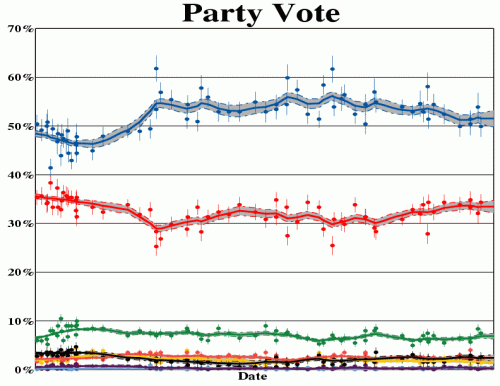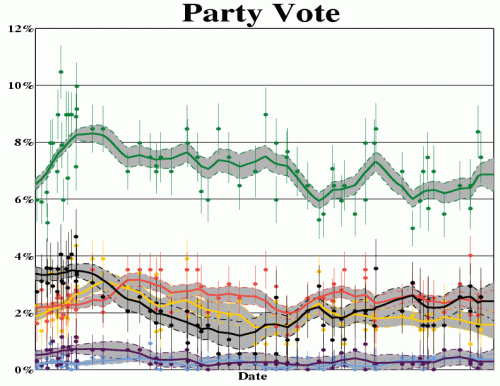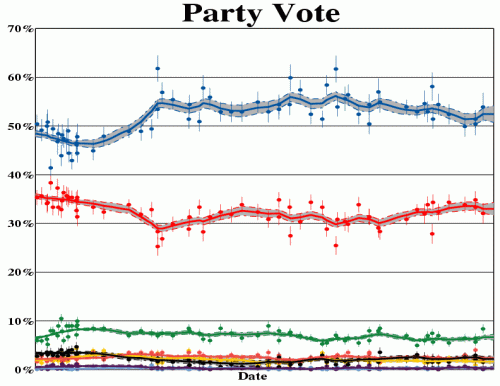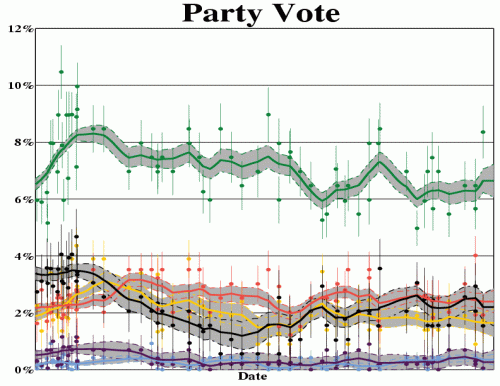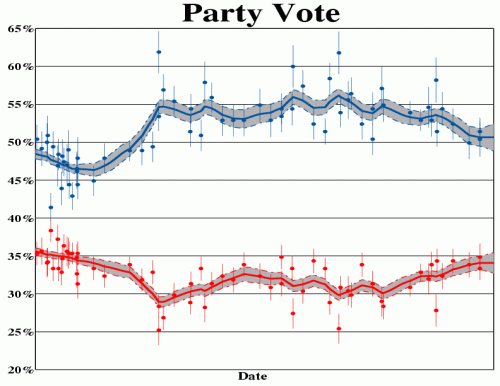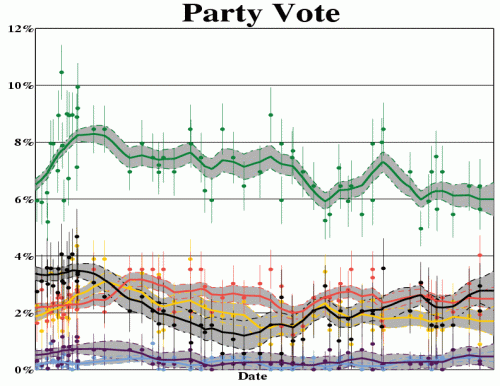The latest NZ political poll is a One News-Colmar Brunton poll that was published on Sunday, May 30. The poll shows a drop in support for National of 5%, and no change in support for Labour (33%) relative to the previous Colmar Brunton poll published in late April.
As usual, the two graphs below summarise the polling averages for the party vote after the new poll. The horizontal axes represent the date, starting 60 days before the 2008 NZ General Election, and finishing on the present day. The solid lines with grey error bands show the moving averages of the party vote for each party, and circles show individual polls with the vertical lines representing the total errors.
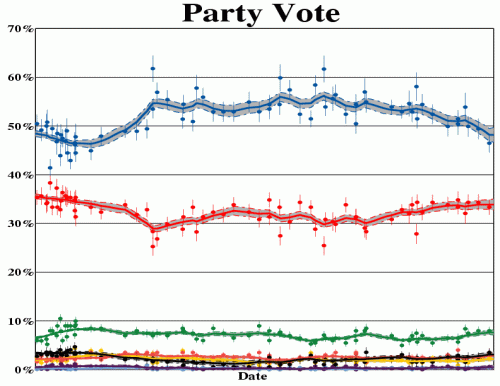
Party vote support for the eight major and minor NZ political parties as determined by moving averages of political polls. Colours correspond to National (blue), Labour (red), Green Party (green), New Zealand First (black), Maori Party (pink), ACT (yellow), United Future (purple), and Progressive (light blue) respectively.
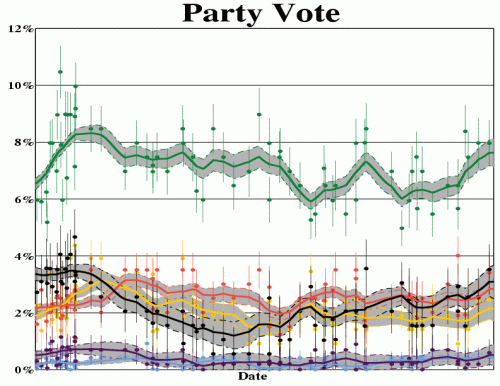
Party vote support for the six minor NZ political parties as determined by moving averages of political polls. Colours correspond to Green Party (green), New Zealand First (black), Maori Party (pink), ACT (yellow), United Future (purple), and Progressive (light blue) respectively.
The latest scenario analysis graph is also shown below:
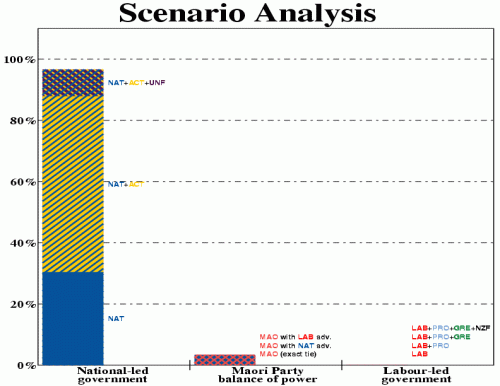
Scenario analysis for 31st May 2010. The bar graph shows the probabilities for different possible outcomes for a NZ General Election if held on that date. The National Party are estimated to have a roughly 31% probability of winning an outright majority of the seats in Parliament.
The National Party are predicted to have a roughly 31% probability of winning an outright majority, with a roughly 58% probability that a National/ACT coalition would have a majority between them. There is an estimated total of roughly 97% probability of a National-led government, with a roughly 3% probability that the Maori Party will hold the balance of power if an election were held on May 31st (although in these cases the center-right parties would most likely hold more seats between them than the centre-left parties).
As always, please check the Graphs page for further simulation results.


